Fangzhou Liao
Defense against Adversarial Attacks Using High-Level Representation Guided Denoiser
May 08, 2018
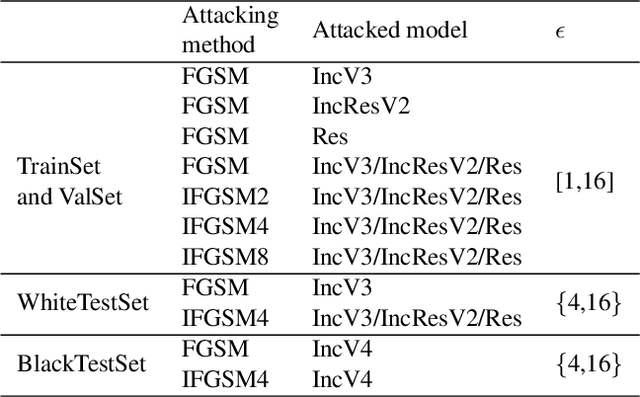

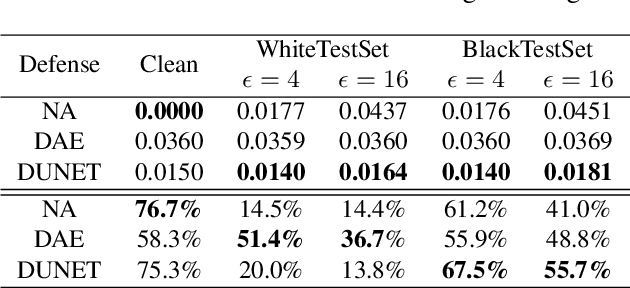
Abstract:Neural networks are vulnerable to adversarial examples, which poses a threat to their application in security sensitive systems. We propose high-level representation guided denoiser (HGD) as a defense for image classification. Standard denoiser suffers from the error amplification effect, in which small residual adversarial noise is progressively amplified and leads to wrong classifications. HGD overcomes this problem by using a loss function defined as the difference between the target model's outputs activated by the clean image and denoised image. Compared with ensemble adversarial training which is the state-of-the-art defending method on large images, HGD has three advantages. First, with HGD as a defense, the target model is more robust to either white-box or black-box adversarial attacks. Second, HGD can be trained on a small subset of the images and generalizes well to other images and unseen classes. Third, HGD can be transferred to defend models other than the one guiding it. In NIPS competition on defense against adversarial attacks, our HGD solution won the first place and outperformed other models by a large margin.
Adversarial Attacks and Defences Competition
Mar 31, 2018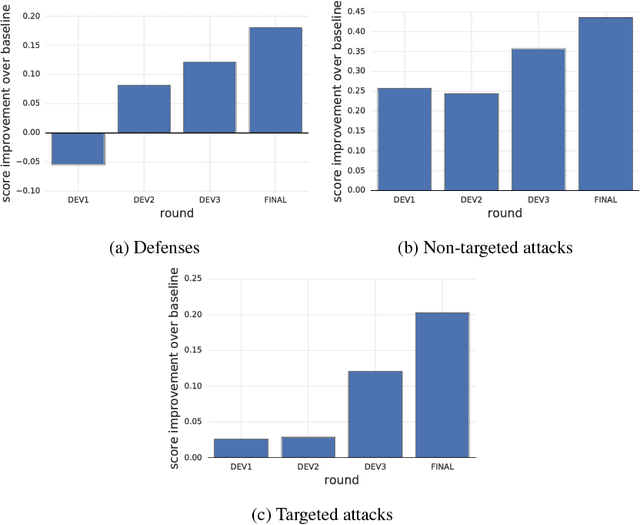


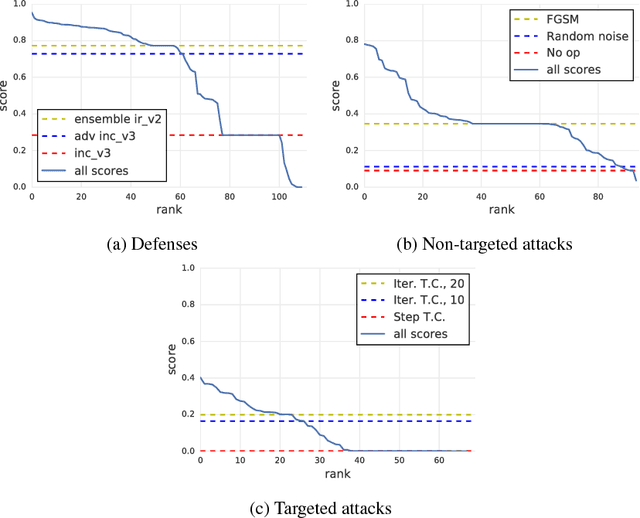
Abstract:To accelerate research on adversarial examples and robustness of machine learning classifiers, Google Brain organized a NIPS 2017 competition that encouraged researchers to develop new methods to generate adversarial examples as well as to develop new ways to defend against them. In this chapter, we describe the structure and organization of the competition and the solutions developed by several of the top-placing teams.
Boosting Adversarial Attacks with Momentum
Mar 22, 2018


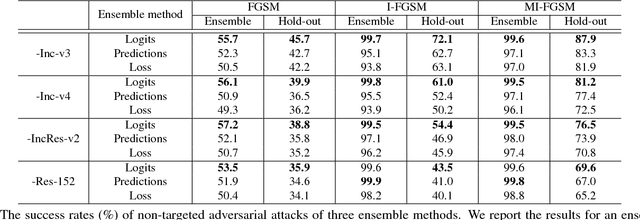
Abstract:Deep neural networks are vulnerable to adversarial examples, which poses security concerns on these algorithms due to the potentially severe consequences. Adversarial attacks serve as an important surrogate to evaluate the robustness of deep learning models before they are deployed. However, most of existing adversarial attacks can only fool a black-box model with a low success rate. To address this issue, we propose a broad class of momentum-based iterative algorithms to boost adversarial attacks. By integrating the momentum term into the iterative process for attacks, our methods can stabilize update directions and escape from poor local maxima during the iterations, resulting in more transferable adversarial examples. To further improve the success rates for black-box attacks, we apply momentum iterative algorithms to an ensemble of models, and show that the adversarially trained models with a strong defense ability are also vulnerable to our black-box attacks. We hope that the proposed methods will serve as a benchmark for evaluating the robustness of various deep models and defense methods. With this method, we won the first places in NIPS 2017 Non-targeted Adversarial Attack and Targeted Adversarial Attack competitions.
Evaluate the Malignancy of Pulmonary Nodules Using the 3D Deep Leaky Noisy-or Network
Nov 22, 2017
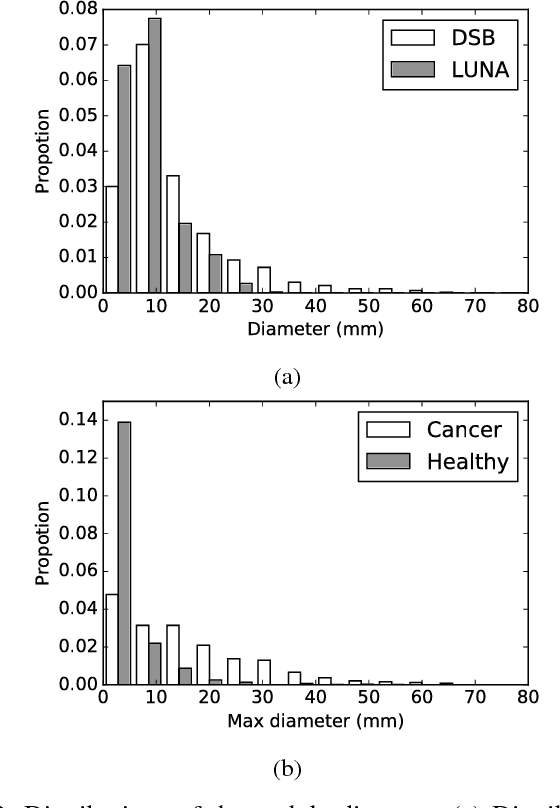
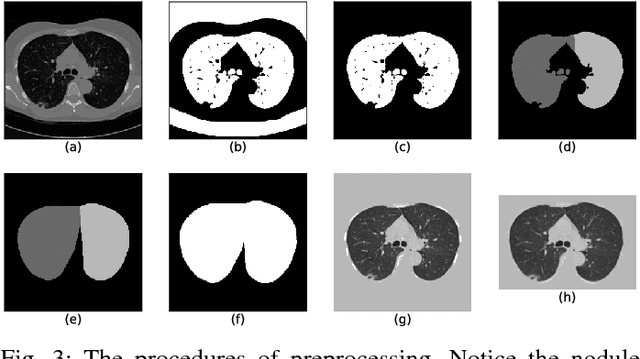

Abstract:Automatic diagnosing lung cancer from Computed Tomography (CT) scans involves two steps: detect all suspicious lesions (pulmonary nodules) and evaluate the whole-lung/pulmonary malignancy. Currently, there are many studies about the first step, but few about the second step. Since the existence of nodule does not definitely indicate cancer, and the morphology of nodule has a complicated relationship with cancer, the diagnosis of lung cancer demands careful investigations on every suspicious nodule and integration of information of all nodules. We propose a 3D deep neural network to solve this problem. The model consists of two modules. The first one is a 3D region proposal network for nodule detection, which outputs all suspicious nodules for a subject. The second one selects the top five nodules based on the detection confidence, evaluates their cancer probabilities and combines them with a leaky noisy-or gate to obtain the probability of lung cancer for the subject. The two modules share the same backbone network, a modified U-net. The over-fitting caused by the shortage of training data is alleviated by training the two modules alternately. The proposed model won the first place in the Data Science Bowl 2017 competition. The code has been made publicly available.
Estimation of the volume of the left ventricle from MRI images using deep neural networks
Feb 13, 2017

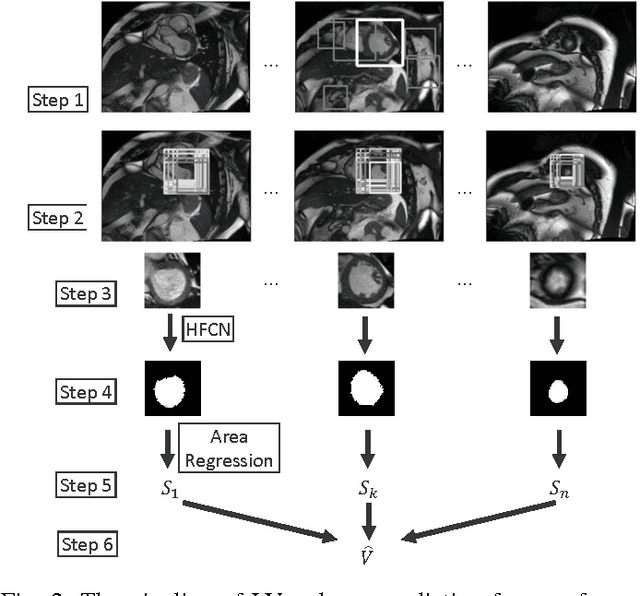
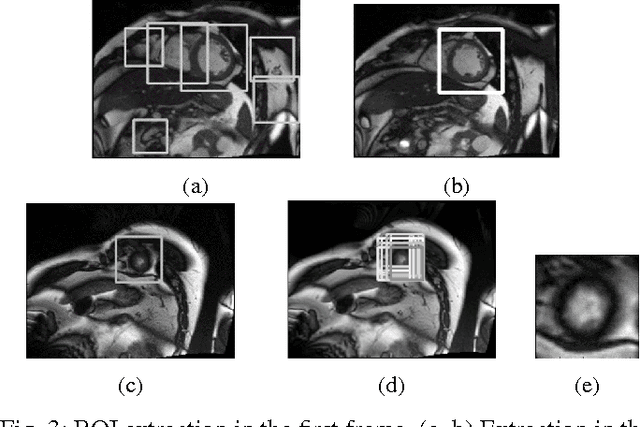
Abstract:Segmenting human left ventricle (LV) in magnetic resonance imaging (MRI) images and calculating its volume are important for diagnosing cardiac diseases. In 2016, Kaggle organized a competition to estimate the volume of LV from MRI images. The dataset consisted of a large number of cases, but only provided systole and diastole volumes as labels. We designed a system based on neural networks to solve this problem. It began with a detector combined with a neural network classifier for detecting regions of interest (ROIs) containing LV chambers. Then a deep neural network named hypercolumns fully convolutional network was used to segment LV in ROIs. The 2D segmentation results were integrated across different images to estimate the volume. With ground-truth volume labels, this model was trained end-to-end. To improve the result, an additional dataset with only segmentation label was used. The model was trained alternately on these two datasets with different types of teaching signals. We also proposed a variance estimation method for the final prediction. Our algorithm ranked the 4th on the test set in this competition.
 Add to Chrome
Add to Chrome Add to Firefox
Add to Firefox Add to Edge
Add to Edge